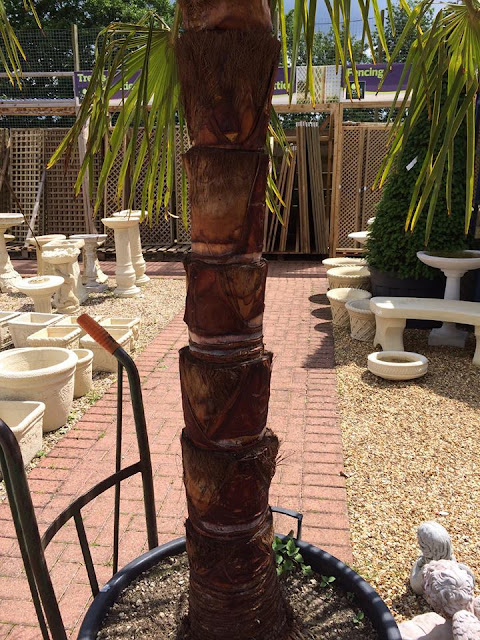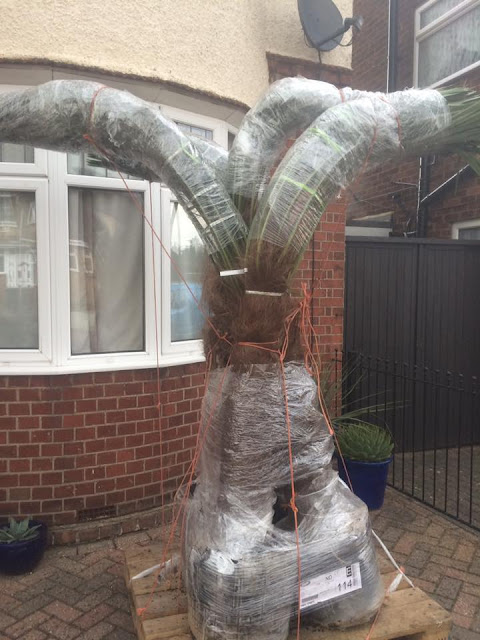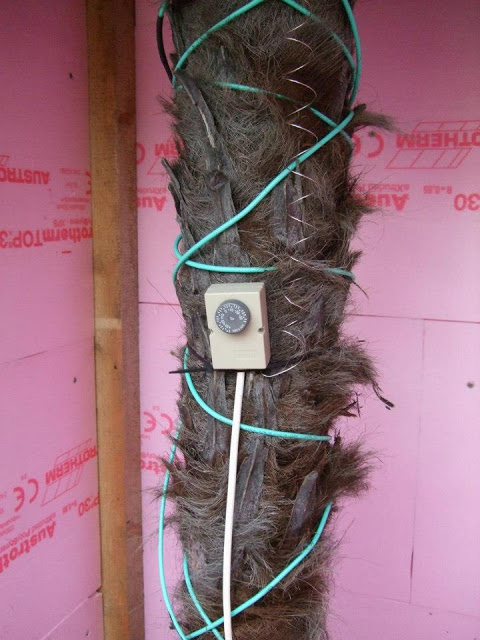Sunday, October 16, 2011
Mark and Gaz
Our top patio is a bit of a jumble at the moment with lots of pots scattered around as we start preparing for the coming cold months ahead. I have been grouping some of the plants, mainly based on where they will be going during the winter, so it will be easier once we get into full swing of shifting these tender/borderline hardy plants under cover.
I don't mind though, in fact I quite like the way this 'temporary display' looks as I get the chance to see some of these plants more individually, and in a different angle too, and enjoy this short, rather avant garde arrangement of plants. A fine disarray me thinks!
One of the plants I'm especially fond of at the moment is this Aloe plicatilis, which is one of the first plants I brought back from our very first trip down to Cornwall many years ago. It was a small, unbranched specimen back then with a perfectly symmetrical appearance that looked like a menorah. Since then it has grown slowly to what is now a multi-headed plant. A special thing about this particular plant is how unfussy it has been when it comes to being overwintered. I have been putting it every winter indoors, in a room that doesn't get any sunlight all winter and is only illuminated by artificial lights and it sails through fine, just making sure I keep it on the dry side. Most aloes detest the lack of winter sun and will die even if kept in a warm spot, but so far this has been an exception. It has stunted it's growth though but that's a good thing as it remains a more manageable size. I might be kinder to it this winter and put in a sunny spot for a change.
More, more, more! Another batch of building materials came in on Friday. This is our sixth delivery from this company this year (they have to be staggered as there's nowhere to put them all in one go) and they know exactly where to put things now with very little supervision. Quite fun to watch though as they unload the pallets!
Also, whilst doing a bit of cutting back on another part of the garden I noticed that one of the leaves I took off a Trachycarpus fortunei is '360 degrees'. Now this phenomenon is a rarity and highly desirable, but only really if all of the leaves of that palm exhibit the same trait, not just one or two like this palm had. Oh well, the leaf was in the way so it had to go.
Here you go, just a little snippet on what we've been doing so far garden wise. Winter preparation continues and I'll blog about it along the way. In reality, there's not much to do compared to how it has been in previous winters, and that's a good thing, and preparation is generally very relaxed this time around.
Mark









 This gardening blog follows our journey as we create our Tropical and Exotic themed garden. We hope you'll enjoy the journey as much as we do. We started our Exotic Garden in 2005 and this site will show its development, as well as our travels, both abroad and within the UK to gardens, nurseries and friends.
This gardening blog follows our journey as we create our Tropical and Exotic themed garden. We hope you'll enjoy the journey as much as we do. We started our Exotic Garden in 2005 and this site will show its development, as well as our travels, both abroad and within the UK to gardens, nurseries and friends.
